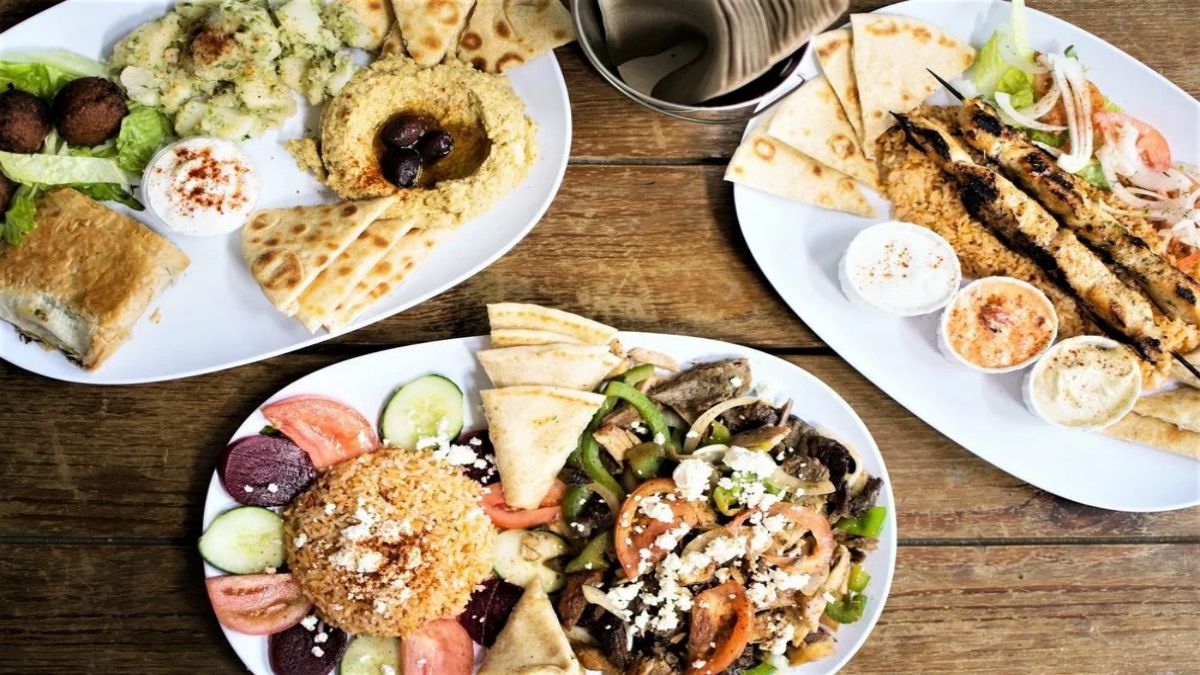Advertisement
Greek food is colorful and tasty because the country has a long history, a lot of different ethnic customs, and a lot of different places.
The Greeks accepted the tasty and healthy Mediterranean diet, which focuses on using fresh foods and tried-and-true cooking methods.
Three ideas guide Greek cooking: a love for good products, the power of sharing meals with others, and the significance of using fragrant, fresh flowers.
Staple Ingredients: Olive Oil, Feta Cheese, Honey
Greek staples like olive oil, feta cheese, and honey give the meal a particular taste. These are crucial for having a genuine Greek experience.
Olive oil
Olive oil is used in a lot of Greek recipes. People sometimes call this oil "liquid gold." Since Greece has the best weather and land for growing olives, it sells more olive oil than any other country.
You can use this oil to make soups, baked goods, and other things in the kitchen. It is an important part of Greek food because it goes well with meat, bread, and veggies and has a rich, fruity taste.
Feta cheese
Another famous Greek dish is feta cheese. It's a brined curd made from goat's milk or a mix of the two.
Because it is crumbly and tastes sour and salty, feta cheese can be used in a lot of different recipes. It goes well with the fresh, bright tastes of Greek food because of its unique taste.
Honey
Greek honey is known for being sweet and fragrant. It is often made from wildflowers and thyme. You can glaze foods with this seasoning, put it on yogurt, or even use it to sweeten sweets.
Greece is famous for its high-quality honey, which comes from a wide range of flowers and farming methods that have been used for a long time.

Traditional Dishes
Traditional Greek food includes a huge range of meals that show off the country's most important products and cooking methods. Here are three well-known examples:
Mousakka: Eggplant, meat and bechamel sauce
This famous baked casserole called moussaka is a great example of how much the Greeks love these kinds of meals.
Usually, it has a rich béchamel sauce, seasoned ground meat (usually lamb or beef), sautéed eggplant, and a top layer of roasted, crispy eggplant. The end result is a meal that is both full and just the right amount of salty and creamy.
Souvlaki: Grilled skewers of meat
You can get souvlaki on the street in Greece. It's small pieces of meat (usually pork, chicken, or lamb) skewered with garlic, herbs, olive oil, and lemon juice.
Souvlaki is a tasty and portable food that comes with pita bread, tomatoes, onions, and tzatziki sauce. It captures the spirit of Greek grilling customs.
Baklava: sweet pastry with nuts and honey
Advertisement
Like baklava and other Greek treats, phyllo cakes are made of layers of thin, flaky dough. Chopped nuts, like walnuts or pecans, are mixed with honey or syrup to make it sweet.
Because it has crisp layers and sticky sugar, this delicious treat is great for parties and other special events.
Interesting Facts
Greece is the third last producer of olives
Because the weather and land are so good for raising olives, Greece is third in the world for olive output. The olives and olive oil that Greece's trees make are very important to the country's food and income. Some of the trees are hundreds of years old.
Greek yogurt is a staple breakfast item in Greece
It wouldn't be right for a Greek home to not have yogurt, especially Greek yogurt that is thick and creamy.
Fruit, honey, and nuts are what most people eat in the morning. Because most of the whey is strained out, Greek yogurt is thicker and higher in protein than regular yogurt.

Family Meals and Dining Customs
Traditional Greek food is based on the strong family values and warm welcome that make up Greek society. Meals are often a chance for people to spend real time with their loved ones, and eating is often a social, leisurely exercise.
Family meals
Greek family feasts are times for laughing, sharing, and happy celebration. At most dinners, you'll find main courses, starters (called mezedes), and sweets.
Our family recipes have been used for a long time, and we make everything from scratch. Everyone helps out at these feasts so that everyone can enjoy the different treats that are made. Sharing a meal with people you care about does more than just fill your stomach.
It's a chance to make new memories and build family bonds. This custom shows how important food is to Greek culture and society.
Dining customs
In the same way that Greek people are friendly and warm, their food customs reflect that. It's traditional to serve a range of meals so that everyone can find something they like. A lot of thought and care goes into making guests feel welcome.
It is usual to raise a glass of ouzo or wine to begin a dinner, and the toasts and lively talk that follow may last late into the night. As a sign of kindness and care, hosts often tell their guests to eat more.
Greek table manners are friendly and casual, just like Greek culture as a whole. They focus on fun and relaxing over strict rules. A pleasant and memorable eating experience is possible because of the friendly setting.

Conclusion
Modern Mediterranean diets owe a lot to Greek food, which is both healthy and deliciously simple.
As is the case with modern diet tips and food trends, there is a focus on using fresh, seasonal ingredients, healthy fats, and well-balanced meals.
As more people look for environmentally friendly ways to eat, Greek food, which has long been praised for its tasty and healthy recipes, stays popular.
Some examples of how Greek food teaches us to value the simple joys of well-prepared, high-quality ingredients are the tangy feta cheese, the fragrant honey, and the layers of savory homemade moussaka.
By following these customs, we respect Greece's long history of food and bring a taste of the Mediterranean into our home.
Advertisement





